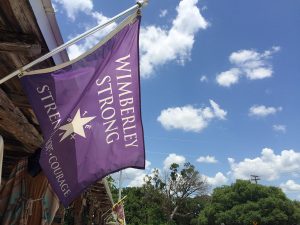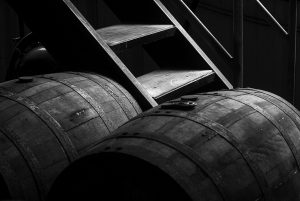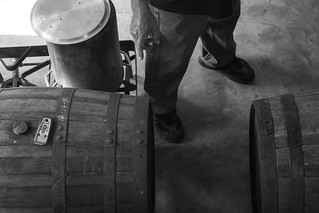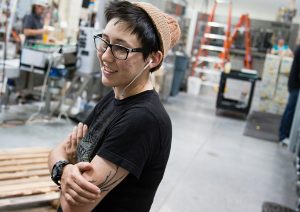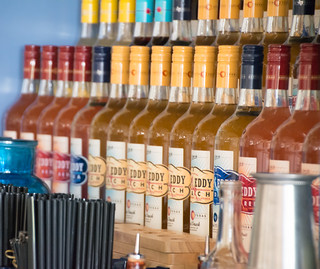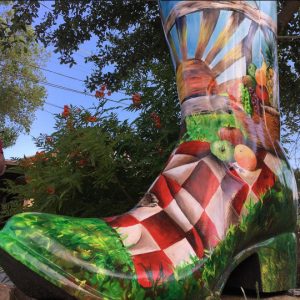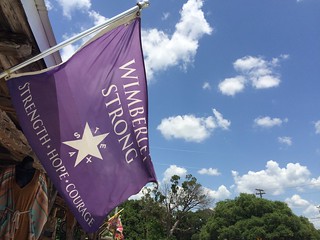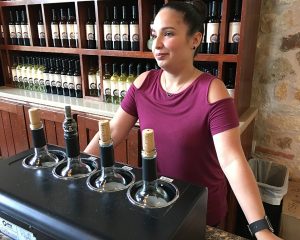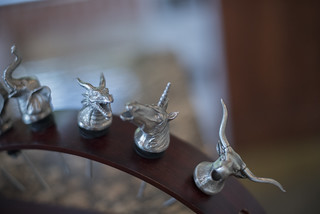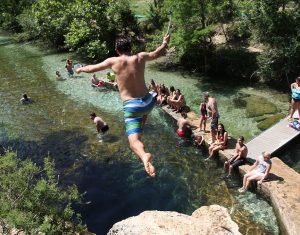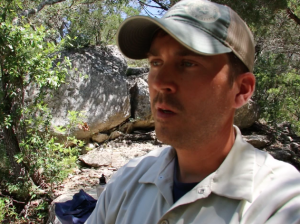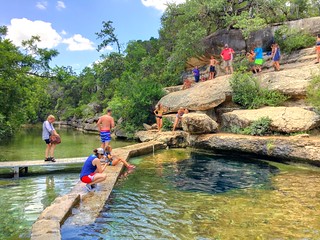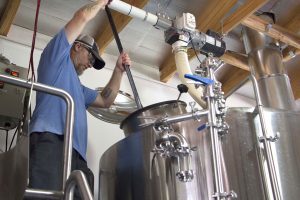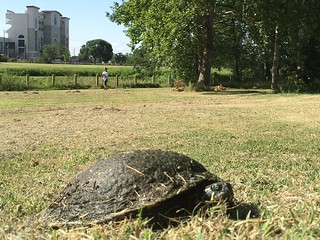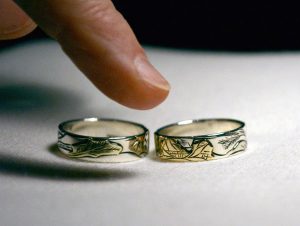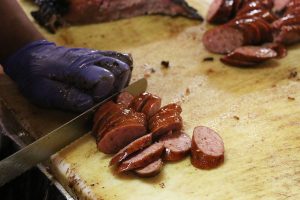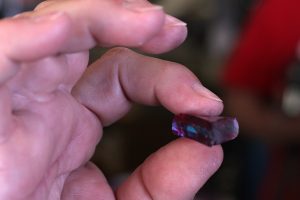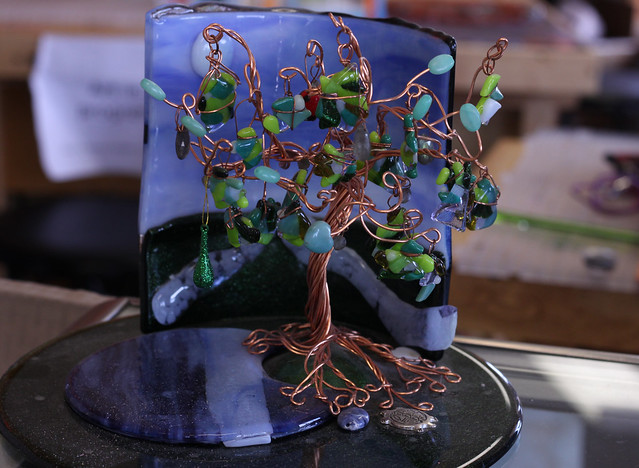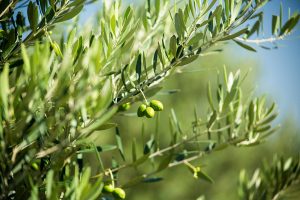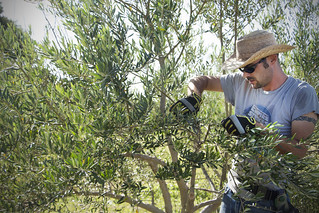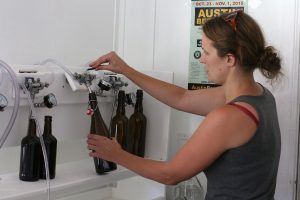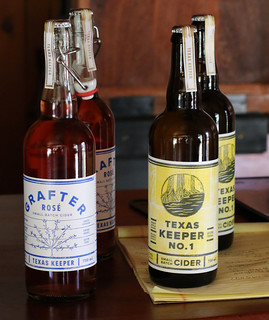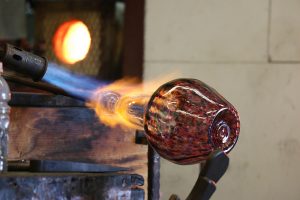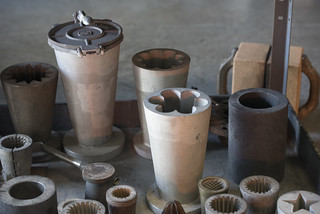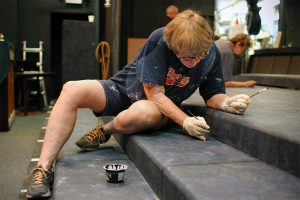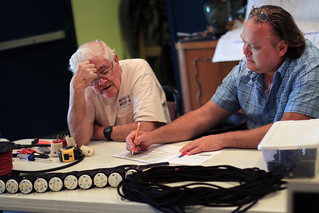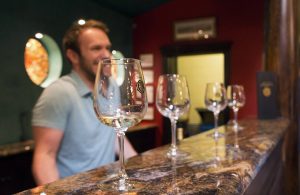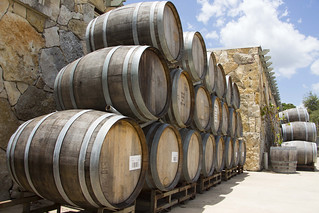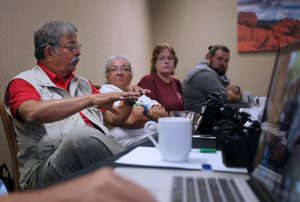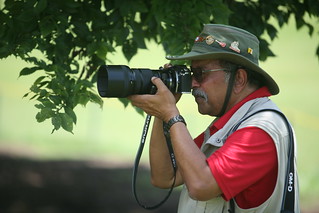Introduction
It wasn’t a particularly original idea. Provide a workshop for photography instructors. Only them. No students. An opportunity to expand skills, to learn new skills and to meet other photography instructors across the state.
But in 1994, it had never been done. So ATPI did it. The first year, held at Collin County Community College (now Collin College), in Plano, there were only two classes: “Darkroom Fundamentals” taught by Mark Murray and “Digital Imaging” taught by Bradley Wilson. Tuition was $100 and 28 instructors attended, including Jeff Grimm. Companies and individuals, like John Knaur from Olympus Corporation, assisted and helped with door prizes.
This year, for the 23rd Summer Workshop — For Instructors Only, we decided to try something different.
Past workshops had generally had multiple sections: action photography, broadcast, Photoshop, curriculum development. This year, we decided to focus on one thing — storytelling.
Last spring, the town of Wimberley, about 40 miles southwest of Austin, was devastated in a Memorial Day Flood.
- When the River Rises — Texas Monthly
- Wimberley Residents Leery Of River Weeks After Devastating Floods — NPR
- First hand account of the devastation in Wimberley flood zone — KZTV
- Wimberley healing six months after flood — San Antonio Express News
- 12 people confirmed missing from Wimberley after floods — Austin American-Statesman
But these floods weren’t anything new to this rural resort community, nearly bisected by the meandering and flood-prone Blanco River and Cypress Creek. Everyone knew the town would come back. So when we were looking for a place to find stories, Wimberley seemed a logical choice.
Having taught at then Wimberley Secondary School from 1989-1993, I knew we would find friendly people willing to tell stories of their businesses and their lives. We weren’t disappointed.
What follows are visual representations — visual stories — of Wimberley and the surrounding area produced by these instructors who remain committed to improving their skills and becoming better teachers.
What isn’t always apparent from the images are the blunt critiques and the challenges — from trying new cameras, to learning new software, to climbing slippery rocks at Jacob’s Well — the workshop attendees faced. Look over their images, at the people and places that have made Wimberley a resiliant little town in the Texas Hill Country. #wimberelystrong
2016 STORYTELLING TEAM LEADERS — Deanne Brown, Jeff Grimm, John Isaac, John Knaur, Ian McVea, Mark Murray, Andrea Negri, Leah Waters, Bradley Wilson
PARTICIPANTS — Delia Alderete, Caron Blake, Diane Bolinger, Molly Buckley, Curtis Christian, Michael Flax, Erica Garcia, Paola Garcia, Natalie Hansen, Jill Holder, Linda Hopson, Cindy Horchem, Russell Kelemen, David Kohlman, Drew Loker, Jennifer Nance, Laura Negri, Frances Packman, Cindy Price, Yanira Roubi, Kathy Saunders, Hal Schmidt, John Skees, Sherry Snooks, Gabriel Tejada, Jerry Townsend, Mitch Ziegler
—Bradley Wilson, Ph.D.
All image remain copyrighted by the original photographer and may NOT be used without permission.
Cypress Creek Reserve Rum Distillery
David Watson started Cypress Creek Reserve Rum in 2000 when he went to an island of Mauritius in the Indian ocean on a treasure hunt. As he discloses on the company’s website, “Diving on sunken ships is a lot of fun.” Still, he failed to find treasure, but found fine rum.
He said that his brother, Daniel, had the idea of importing the rum to the United States. “This sounded like a great idea to me.”
One thing led to another and they decided to make their own rum.
Having lived most of his life as a welder, the last 20 years offshore, Watson bought a 600-gallon stainless steel tank to use and then designed and built the head and condenser out of copper.
“It does make some fine rum. That is what counts.”
The rum is distilled twice. There is a stripping run and a finishing run. Unlike vodka, rum needs to retain certain flavors that multiple distillations would remove. Part of the flavor comes from the Texas Hill Country water, water perfectly suited for making liquor.
“Certainly this is one of the reasons that so many in the wine and liquor industry have located in central Texas.”
Now, together with his wife, Laura, who does most of the labeling, bottling and extensive paperwork, they operate the distillery in Wimberley.
Deep Eddy Vodka
The bottling plant for Deep Eddy Vodka off Highway 290 West in Dripping Springs is no small endeavor. With 30,000 square feet devoted to the distillery and bottling and 5,000 square feet devoted to the tasting room, the only problem is that it’s not enough.
The company is growing too fast, even though workers finish 500 bottles of the flavored vodka (lemon, peach, grapefruit, sweet tea and cranberry in addition to unflavored) per hour.
“If we stopped producing, the warehouse would be empty in four or five days,” Kevin Huurman, the second oldest person in the plant, said.
Huurman, whose actual title is general manager, said the drink is particularly popular during the warmer months.
“During the winter, people prefer darker drinks,” he said. “Plus, it slips down very easily.”
Huurman said the two, 10-hour shifts produce the flavored spirits starting with a 190-proof grain neutral spirit fermented elsewhere.
“We have a very good workforce here,” he said, discussing the paintball tournament the entire crew played the previous weekend. “They’re very loyal.”
Downtown Wimberley
Until this century, Wimberley was just Wimberley. Not a town. Not a city. Just Wimberley. It started as a trading post settlement near Cypress Creek in 1848. And it became home to world renown authors, artists and musicians looking for life outside the big city.
In May of 2000 a central portion of the Wimberley area was incorporated as the Village of Wimberley, comprised of approximately 10 percent of the Wimberley area residents and many of the centrally located businesses. The Village of Wimberley survived until 2007, when the council voted to make it a “city,” but not without controversy.
Now it’s just plain Wimberley.
However, the more than 13,000 residents of the valley — but only about 4,000 in incorporated areas — are those that make up Wimberley as most folks refer to it, still defined by the ZIP code — 78676.
In 2014, the Wimberley Valley Arts and Cultural Alliance started Bootiful Wimberley as a way to highlight the arts in the area. Initially, area artists sponsored 32 over-sized boots. School children painted recycled cowboy boots for their July 4 parade float. The over-sized collection of boots was unveiled Sept. 13 at the “Baring Our Boots” party, and less than a year later, 18 more boots were added to the mix and installed throughout the community.
On May 25, 2015, the town was hit by catastrophic flooding along the Blanco River which flows through town. The river crested at an estimated 41.5 feet, almost 30 feet above flood stage. About a year later, area residents held a one-year remembrance and celebration of recovery — Wimberley Strong.
Duchman Family Winery
Founded in 2004, Duchman Family Winery founders Lisa and Stan Duchman set forth on their quest to bring world-class winemaking to Central Texas and the Texas Hill Country.
In the November 2012 issue of Southern Living, Paula Disbrowe wrote about the area in which the winery is located.
“Surrounded by the Hill Country’s rugged beauty and filled with a growing number of wineries and food destinations, the area around Driftwood has earned the nickname ‘the Napa of Texas.’”
At the winery, the Duchman’s worked with Bobby Cox and growers in the Texas High Plains AVA to produce grapes that would allow their winemakers, Dave Reilly and Mark Penna, to experiment with making wines like Vermentino, Sangiovese and Dolcetto.
The winery continues to source the majority of its fruit from the Texas High Plains, where cooler temperatures and a more “continental” climate are ideal for the production of fine wine made from Italian grape varieties.
As the winery grows, the founders remain committed to their goal to produce food-friendly fine wine in Central Texas using Texas-grown fruit exclusively.
Jacob’s Well
Jacob’s Well is the beginning, the 140-foot deep headwaters of Cypress Creek, the creek on which settlers stopped in the mid-1800s. Now, it is part of an 81.5 acre preserve owned and managed by Hays County. This ecological resource is the most significant and largest, continually flowing karstic spring in the Texas Hill Country.
“The main attraction here is the well itself,” Joe Kipp, a park ranger, said of the park that cost the county $4 million in 2010. “It’s a natural artesian spring that comes from the Trinity aquifer. It stays about 68 degrees so it’s really refreshing on the hot summer days.”
There is no charge for hiking the miles of trails in the park or for just hanging out. But to swim. That costs $9 per person for non-residents of Hays County.
Kipp, who moved to the area in the fall of 2015, said, “People like to come jump off our limestone rocks. A bunch of kids like to come swim in the more shallow area.”
And he advised that people make reservations online since it can get crowded.
“If you’re going to plan a trip here, make a reservation here,” he said. “We only allow 60 people here at a time for a 2-hour period. The weekends book very quickly. You want to book at least two weeks in advance. It gets really busy.”
Jacob’s Well 1 by Drew Loker on Vimeo.
Jacob’s Well 2 on Vimeo.
Jacob’s Well 3 on Vimeo.
Last Stand Brewery
From a Belgian Pale Ale to SMaSH (single malt and single hop), the Last Stand Brewery itself isn’t exactly easy to find.
The taproom and beer garden are nestled off a small road — 12345 Pauls Valley Rd to be precise — in Hays County.
And the reason for that is simple, according to Kerry Richardson, founder and owner.
” ’Cause Austin hates small businesses,” he said. “The small business that actually contributed to the local economy can’t make it.”
Still, the rural local — or perhaps because of it — the business is thriving. Bottles of the beer can be found in about 10 Central Texas shops, including Specs, on more than 20 taps.
Perhaps the best place to try the beer is right where it’s brewed in Craftsman Park where the same people who brew the beer, taste it and serve it with bags of barley only a few feet of way.
The brewery has a decade-long history according to an article online in Craft Beer — Austin.
According to the article by Pam Catoe, “About 10 years ago, Kerry Richardson and his wife Mandi began home brewing together. This came after Mandi asked her mom what the key to a successful marriage was. ‘My mom said, ‘if you want to stay together, you need hobbies you can do together’, so I said, let’s brew beer! ’ ”
Their love for craft beer began with trips to Germany where they both discovered that beer could be good.
As the brewery expands and reaches in to more locations around the state, both Richardson and brewer Jim Sampson said their priority is brewing good beer.
“I’m a brewer,” Sampson said. “I make beer, and I do the best I can.”
If the company’s expansion in the last few years is any indication, they must be doing well.
The Meadows Center
The Meadows Center for Water and the Environment is an educational center in San Marcos dedicated to the preservation of the unique archeological and biological resources of Spring Lake, the headwater to the San Marcos River. As the website indicates, “No natural resource is more important to our future than water.”
Two hundred springs bubble up from the bottom of Spring Lake to form one of the largest aquifer-driven spring systems in the world. This unique environment is one of the longest continuously inhabited sites in North America and provides a stable home for eight threatened and endangered species.
The area had previously been known as Aquarena Springs and was home to a resort hotel, a theme park and the infamous Ralph the Swimming Pig. Due to declining attendance, precipitated in part by the creation of mega theme parks in San Antonio, Texas State University re-envisioned the area as a nature center, now with 100,000 visitors per year.
Ronald Coley, director of the Aquarena Center, said in an Austin Chronicle article, “By the time we stepped in, it was the beginning of the explosive growth of Schlitterbahn. So you had Sea World and Fiesta Texas and Schlitterbahn. … With all that competition, we knew that Aquarena Springs would do nothing but decline.”
The TSU Meadows on Vimeo.
Moon Dance Arts
The Moon Dance Arts gallery is nestled within the courtyard garden in Wimberley Square, behind The Old Mill Store. Prior to opening their gallery in 2009, Kathy and Gary Arnold showed and sold their jewelry pieces in more than 750 juried shows, winning more than 50 awards for their designs and workmanship.
“I made my first piece of jewelry around 1968,” Gary said in a blog posting. “I was a working professional industrial welder with a background in mechanical drawing and art. I applied that to my jewelry making as a hobby in the beginning, and found out immediately that everything I made would sell. In the 1970s, jewelry and art were undergoing a reawakening. I took jewelry as a serious expression and began to make it my life’s work.”
Salt Lick BBQ
At the history of the Driftwood restaurant goes, “The roots of The Salt Lick run back to Mississippi in the mid-1800s. Scott Roberts, the current owner of the Salt Lick, had a great-grandmother, Bettie Howard, who came to this land from Desoto, Miss. in 1867.
“In 1956, Scott’s mother and father, Thurman, moved with their two young sons to Driftwood. But his father had to travel constantly across the state working for a bridge construction company. Thurman dreamed of spending every day where his family had put down generations of roots.
“One day he and Hisako took out a yellow legal pad and wrote down 54 things the family could do and stay in Driftwood. The idea for the Salt Lick was 14th on the list.”
Now, the restaurant staff cook more than 750,000 pounds of brisket, 350,000 pounds of pork ribs, 200,000 pounds of sausage and tens of thousands of chickens.
The restaurant has been featured in The New York Times and Texas Monthly.
Daniel Vaughn wrote, “I’ve often thought that the Salt Lick is a joint that serves very respectable smoked meat, and is vastly overrated at the same time. A visit here isn’t just about barbecue. It’s about atmosphere, catching up with friends, and taking the Salt Lick vibe while enjoying a few cold ones or some of the wine produced by Salt Lick Cellars from the on-site vineyard.”
Sometimes, the restaurant, now with locations in three airports and Round Rock, has been conspicuously omitted, to the frustration of loyals.
In 2008, the Salt Lick was featured during an Austin episode in the first season of the Travel Channel’s show Man v. Food and the restaurant was positively reviewed by Food Network chefs Bobby Flay and Duff Goldman. Then in 2012 it was featured on another Travel Channel show, Adam Richman’s Best Sandwich in America, for its spicy brisket jalapeño sandwich topped with habanero sauce.
Silo Glass
After retiring from programming careers with IBM, Chester John and Elissa Beach looked for a community with a healthy artist community. Wimberley fit the bill. Plus it was a wonderful place to live. Chester and Elissa moved to Wimberley in February of 2015 and opened Silo Glass Labor Day weekend.
They have 13 years of combined experience creating glass art. After many years of collecting glass, Chester said he was ready to take on the role of artist. Chester said he loves experimenting and has created his own style and several unique techniques. Elissa said she loves to work with color and light, a wonderful aspect of glass.
Texas Hill Country Olive
Texas Hill Country Olive Company began in 2008 when John Gambini and his brother-in-law Rick Mensik, bought 17 acres of land in Dripping Springs to plant olive trees.
As Cara Gambini said on the company’s website, “Since day one the focus has been on preserving the natural beauty of the area while providing fresh, locally produced extra-virgin olive oil and other premium quality products.”
The families, third- and four-generation Italians, said the Central Texas landscape pays homage to Italy, particularly given the rocky limestone soil that keeps the soil more alkaline. Further, the slope of the land and the rocks in the soil help with water drainage.
The Gambini’s and Mensik’s regularly guide tours through the facility into the olive orchards and next door to the Tasting Room.
Cara said, “We are passionate about what we do, and the most awarded olive oil company in Texas, located in the beautiful and beloved ‘Texas Hill Country’ of Dripping Springs Texas.”
Texas Keeper Cidery
As Brooklynn Johnson wrote in CiderCraft magazine, “It started with three friends. Brandon Wilde and Lindsey Peebles can trace the story of their friendship all the way back to elementary school. Nick Doughty completed the friendship trio in high school, and the rest is history.”
“We brought our first fruit down in March of 2014,” says Doughty, co-founder and cidermaker at Texas Keeper in Austin, Texas.
Texas Keeper started in 2013 and specializes in making craft hard ciders. It was named as tribute to the Hick’s Texas Keeper apple variety, which originated in Texas but became extinct in the 1880s.
Wimberley Glassworks
Wimberley Glassworks is a hand-blown glass lighting and art glass studio in Wimberley in which artists have been creating exclusive glass collections, limited edition vases, sculptures, platters and lighting since 1992.
Wimberley Glassworks hosts daily glass blowing demonstrations for travelers and art glass enthusiasts from around the world.
The free glassblowing demonstrations show the process of crafting molten glass into art using a variety of materials to create the brilliantly colored designs displayed in the gallery.
The owner, Tim deJong, studied ceramics, sculpture and glass at Alfred University in New York. Like so many other people, he came to Texas on vacation and fell in love with the Texas Hill Country. Within a year of his visit, he purchased property and opened Wimberley Glassworks now located of RR12 in Wimberley. He is the sole owner and employs three other full-time glassblowers.
“It’s an art that takes a long time to work with and really learn it and bond with it and to be able to create something that’s really beautiful,” said deJong’s wife Vanessa Horodecky in a KXAN story about the couple.
Wimberley Glassworks on Vimeo.
Hal Schmidt’s Wimberley Glassworks on Vimeo.
Wimberley Players
“Amazing theater.”
The header on the website doesn’t stop here, however, boasting of the life of the community theater in the small, Central Texas town.
“All remaining performances of Jesus Christ Superstar are sold out.”
A testimony to the success of the program.
As the cast and crew prepared for the summer musical, one of five productions this season, it was clear that these volunteers and paid staffers take their jobs seriously, sketching set designs, hanging lights and painting backdrops.
As with so many non-profit organizations, especially community theaters, the Wimberley Players didn’t always start with a 17-member board or a theater to call their own.
Back in 1979, a group of friends proclaimed, “There’s nothing to do in this town.” So they formed, according to the organization’s website, the Wimberley Players, originally performing at the Greenhouse Theatre in Woodcreek. In 2006, the organization had renovated and built a new theater on Old Kyle Road and still have two shows this season, Lost in Yonkers and Vanya and Soni and Masha and Spike.
Backstage at the Wimberley Players Theater on Vimeo.
Wimberley Valley Winery
Founded in 1983, Wimberley Valley Winery produces special Christmas wines and seasonal fruit wines as part of Dean and Jana Valentine’s family venture, a venture that includes two of their children, Carisa and Daniel.
Located on Lone Man Mountain Road, between Driftwood and Wimberley, on 30 acres of Texas Hill Country, the original winery has frequently undergone renovations and additions as the company has grown. Today the facility is capable of fermenting and storing 25,000 gallons of handcrafted wine using temperature-controlled stainless steel cooperage to precisely exact the production and maintain the quality of the wines.
However, as Jeff Cope wrote in Texas Wine Lover, “Wimberley Valley Winery does not use any Texas grapes. We were surprised even the fruit is from New York State. The Moscato was from California. The winery makes mostly fruit wines so to supplement their wine tasting list they provide wines from Robert Hall Winery of California like the Chardonnay and Sauvignon Blanc. They also had a Chilean wine available.
ATPI Summer Workshop — For Instructors Only
Behind the Scenes
.
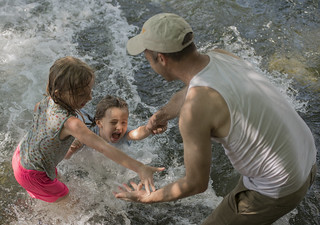
CLICK THE IMAGE TO VIEW A BEHIND-THE-SCENES FLICKR GALLERY OF IMAGES FROM THE ATPI URBAN ADVENTURE IN AUSTIN



